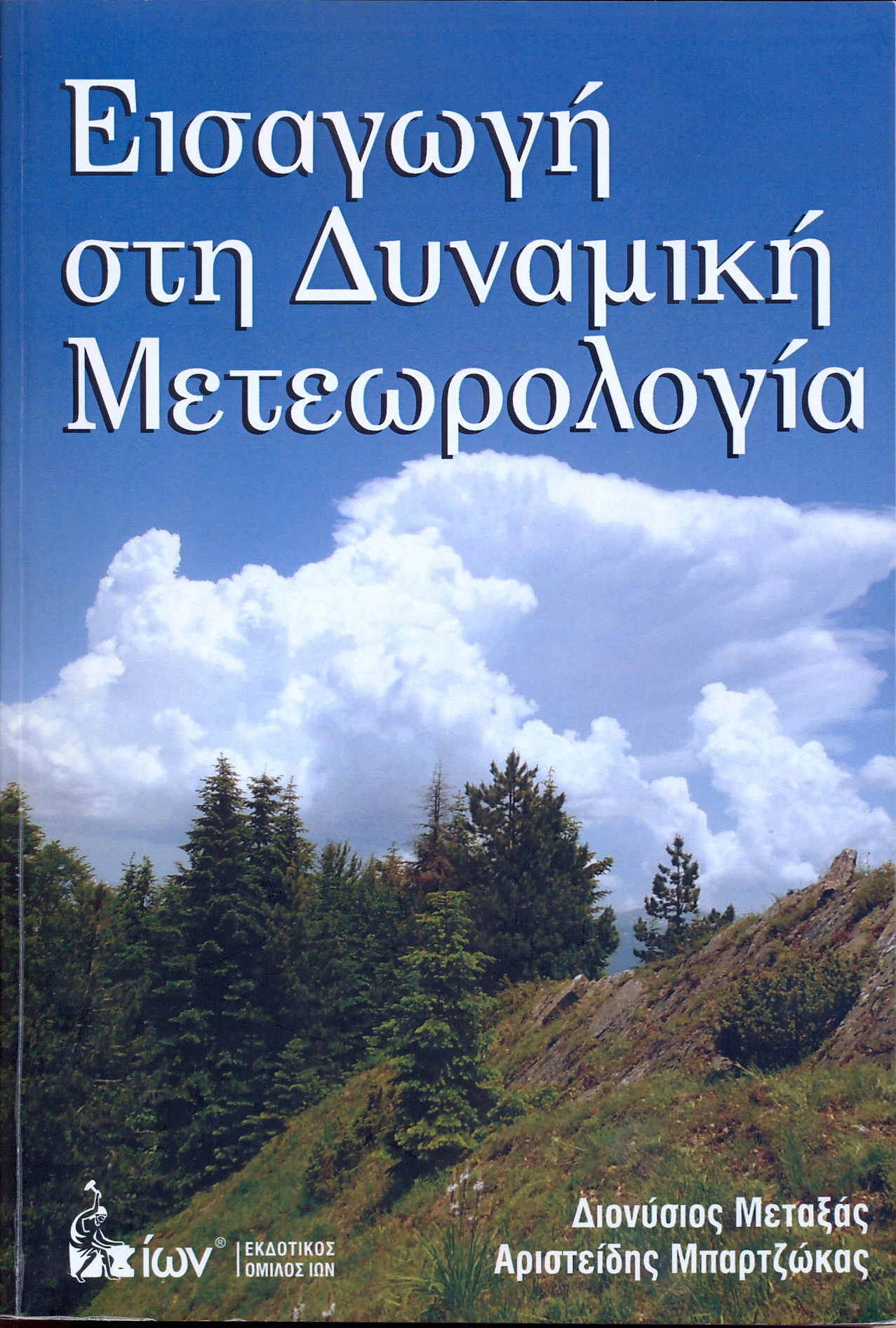GENERAL METEOROLOGY
Origin, composition and vertical structure of the atmosphere
Short-wave and long-wave radiation in the atmosphere
The greenhouse effect
Air, ground and sea surface temperatures
Temperature inversions
Atmospheric pressure
Wind
Evaporation and air humidity
Clouds
Fog and other forms of small-scale condensations
Precipitation
Vertical stability of the atmosphere
Air masses and fronts
Depressions
Anticyclones
Tropical cyclones
Thunderstorms
Tornados
Meteorological observations and codes
Meteorological maps
Weather forecast
ATMOSPHERIC PHYSICS
Description and elements of Chemistry of the Atmosphere
Radiations and the Atmosphere
Thermodynamics and stability of the Atmosphere
Cloud Physics
Electricity and Optics of the Atmosphere
Techniques and instruments for measuring the physical parameters of the Atmosphere
DYNAMICAL METEOROLOGY
Thermodynamics of dry and humid air
Hydrostatics and vertical stability-instability
Basic equations of motion and applications to special types of flow
Trajectories and Streamlines
Continuity equation
Circulation and vorticity
The thermal wind
Temperature advection
Vertical structure of pressure systems

FLUID MECHANICS
Basic principles of fluid mechanics
Statics of fluids
Kinematics of fluids
Equations of motion
Some 2-dimensional flows
Some 3-dimensional flows
Flow of viscous fluids
Stress components in a real fluid
Equations of motion in real fluids
Dimensional analysis
Dimensionless parameters (Reynolds, Froude and Richardson numbers)
Compressible flow
Thermodynamics of fluids
Applications, problems and exercises
ENVIRONMENTAL PHYSICS
Air pollution
Sources and cycles of atmospheric pollutants
Aerosols
Particle classification according to their size
Removal mechanisms of atmospheric pollutants
Structure of boundary layer
Mixing length
Reynold's number
Air pollution and Meteorology
Models of advection study, diffusion and settlement study
Impact of temperature distribution in diffusion
Impact of meteorological parameters
Pollution sinks
Impact of air pollution in weather and climate
Pollution consequences in health, natural environment and biota
Radioactive contamination.
Noise pollution
Physics and pollution of waters (sea, lakes, rivers) and the ground
Sources of renewable energy
Solar, wind and other energy resources (geothermy, biomass, waterfalls)
METEOROLOGY
The Atmosphere
Branches of Meteorology and Climatology
Meteorological elements
The Sun and its radiation
Thermodynamics of the Atmosphere
Hydrostatics of the Atmosphere
Atmospheric stability-instability
Planetary pressure distribution
Air motion
Wind, air masses and fronts
Depressions and anticyclones
Elements of weather analysis and prediction
TOPICS ON ATMOSPHERIC AND SPACE SCIENCES
The Atmosphere
Weather and Climate
Temperature
Atmospheric pressure
Wind
Precipitation
Evaporation
Cloudiness
Sunshine
Humidity
Solar radiation
Elements of weather analysis and prediction
A short history of Astronomy
Basic instruments and methods of astronomical observations
The solar system
The sun
The earth
The moon
Planets
Comets
Asteroids
Our galaxy
Other galaxies
Evolution of stars
UNDERGRADUATE RESEARCH PROJECT
Students
interested in this course should arrange for a staff member to supervise their research project
METEOROLOGY-CLIMATOLOGY
Introduction
Branches of Meteorology and Climatology
Weather and climate
Climatological elements
The Sun and its radiation
Thermodynamics and hydrostatics of the atmosphere
Atmospheric
pressure
Planetary pressure distribution
Air motion
Wind, air masses and fronts
Depressions and anticyclones
Elements of weather analysis and prediction
Factors that influence and form the climate
Identification of local and planetary climates
Climate zones
Large scale factors that control the climate
Statistical Climatology
Methods of climate analysis
Climate changes and cycles
Applications of Climatology
PHYSICAL CLIMATOLOGY
Solar radiation
Distribution of solar radiation within the
Earth-Atmosphere system
Longwave Radiation
Global distribution of longwave radiation
The global
radiation budget
The atmospheric boundary layer
Turbulent effects on meteorological
parameters
Soil heat transfer
Surface properties and variation of surface
temperature
The hydrological cycle
The energy budget of the Earth-Atmosphere system.
NATURAL ENERGY SOURCES, NATURAL RESOURCES AND ENVIRONMENTAL IMPLICATIONS
Renewable natural sources of energy.
Solar energy, Wind energy, Geothermal Energy, Hydropower.
Exploitation of energy sources and implications in the Environment.
Natural resources (water, forests, fuels, etc).
Ecosystems.
Management, exploitation and disposal of Natural Resources.
Implications of exploitation of
Natural resources in the Environment.
Natural disasters.
Sustainable development.
Statistical and mathematical
models for the study of natural sources of energy and natural resources.
Exercises and applications.
Non-renewable natural sources of energy.
Sources of conventional fuels (mining fuels, natural gas, etc).
Nuclear energy (fission, controlled thermonuclear fusion).
Implications in the Environment.
Problems and applications.
